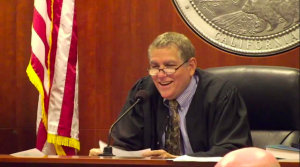September 30,2015
 I concur strongly with the recently passed New York State legislation finding Drug Court Judges unqualified to make certain treatment decisions. In my 2001 monograph, “Rational Drug Policy Reform: A Resorce Guide”, I spoke of the Drug court and the Drug Court Judge’s role “to motivate the drug abuser to comply with treatment requirements”, and concluded ” drug courts recognize that drug abuse is not primarily a criminal justice problem, but that the courts are a necessary component of its solution”.
I concur strongly with the recently passed New York State legislation finding Drug Court Judges unqualified to make certain treatment decisions. In my 2001 monograph, “Rational Drug Policy Reform: A Resorce Guide”, I spoke of the Drug court and the Drug Court Judge’s role “to motivate the drug abuser to comply with treatment requirements”, and concluded ” drug courts recognize that drug abuse is not primarily a criminal justice problem, but that the courts are a necessary component of its solution”.
“In 1961, the U.S. Supreme Court in the landmark case, Robinson v. California laid the groundwork for the drug court model. In Robinson, Justice Stewart speaking for the majority held that:
“It is unlikely that any State at this moment in history would attempt to make it a criminal offense for a person to be mentally ill, or a leper, or to be afflicted with a venereal disease. A State might determine that the general health and welfare require that the victims of these and other human afflictions be dealt with by compulsory treatment, involving quarantine, confinement, or sequestration. But, in the light of contemporary human knowledge, a law, which made a criminal offense of such a disease, would doubtless be universally thought to be an infliction of cruel and unusual punishment in violation of the Eighth and Fourteenth Amendments.”
Being an addict would no longer be a “moral affliction”, but be legally recognized as having a disease that needed treatment. While being in possession of illegal drugs was not a status offender and could be punished as a crime, from Robinson onward, treatment would become more acceptable and in some cases the preferred approach to the drug possessor. According to commentators, the Robinson decision spurred both the Nixon and Carter administrations to develop non-penal responses to drug offenders. In the 1970’s for example, TASC, a nationwide federal initiative, was designed to provide a bridge between the addict and the criminal justice system, providing treatment rather than punishment for the drug offender.



